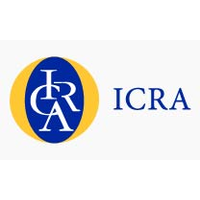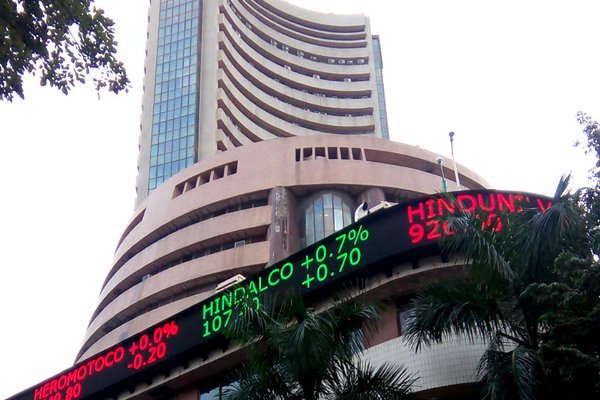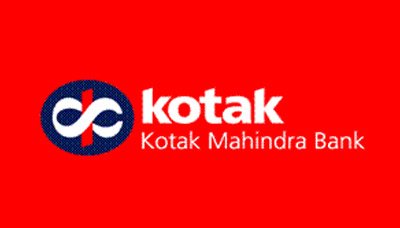Steady increase in trading activity with trading volumes peak in July 2020; aggregate turnover up 34% in 5M FY2021
- Significant increase in retail participation; as per SEBI, the total number of demat accounts increased to 432 lakh as of June 2020 compared to 408 lakh in March 2020
- Industry outlook is cautiously stable; while growth momentum is expected to continue, operational and funding challenges could have bearing on performance

Mumbai, September 24, 2020: The domestic capital markets have witnessed an unexpected surge in the current fiscal, in a stark contrast to the overall economic outlook. While the economy has been reeling under the pressure of the Covid-19 pandemic and nationwide lockdowns, the trading volumes in the domestic capital markets have been on an upwards trajectory, reaching an all-time high in July 2020. The industry turnover / trading volumes, declined in March 2020, after a strong performance in January and February 2020, amid weak global and domestic cues, coupled with Covid-19 concerns. Trading volumes were further impacted after the Securities and Exchange Board of India (SEBI) revised market-wide position limit in March 2020, in a bid to curb speculative trading and market volatility. The trading activity remained subdued in April 2020 with the industry registering a total average daily turnover (ADTO) of Rs. 12.02 lakh crore, a marginal contraction of 2% from March level. Thereafter, there has been a steady increase in trading volumes. Over the five-month period ending August 2020 (5M FY2021), the equity capital markets reported an aggregate turnover of Rs. 1,719 lakh crore, up from Rs. 1,366 lakh crore in 5M FY2020, registering a year-on-year (YoY) growth of 24%. The ADTO increased to Rs. 16.69 lakh crore in 5M FY2021 compared to Rs. 13.26 lakh crore in the comparable period last year and Rs. 14.39 lakh crore for FY2020. Rising trading volumes has been supported by the growing participation of retail investors. This trend coupled with the steady cash volumes is expected to be value accretive for stock brokerage companies, given the higher yields associated with these segments.
The cash segment outperformed the industry in terms of volume growth, clocking a total turnover of Rs. 63 lakh crore in 5M FY2021 (Rs. 37 lakh crore in 5M FY2020 & Rs. 97 lakh crore in FY2020). ADTO for the cash segment increased to Rs. 0.61 lakh crore in 5M FY2021 (Rs. 0.36 lakh crore in 5M FY2020 , a Y-o-Y growth of 71% and Rs. 0.39 lakh crore in FY2020). The share of cash segment in total turnover registered a marginal increase to 3.7% in 5M FY2021 (2.72% in FY2020). The equity markets, however, continue to be dominated by the derivatives segment. The ADTO for the derivatives segment increased to Rs. 16.08 lakh crore in 5M FY2021 (Rs. 12.91 lakh crore in 5M FY2020, a Y-o-Y growth of 25% and Rs. 13.99 lakh crore in FY2020).
According to Ms. Samriddhi Chowdhary, Vice President & Co- Head – Financial Sector Ratings, ICRA, “equity markets have emerged as an unlikely beneficiary of the pandemic. The option of work from home coupled with limited investment opportunities given the challenging economic environment and attractive valuations following the correction in March 2020 have helped drive investor interest to capital markets. The increase in retail investors in capital markets can be witnessed by new account openings in the industry, with the total number of demat accounts increasing to 432 lakh as of June 2020 up from 408 lakh in March 2020 and 359 lakh in March 2019. Clarification by SEBI on the know your customer (KYC) process and use of technology for KYC further facilitated the online account opening process which in-turn has further supported online client acquisitions.”
Large established entities with strong presence in online broking have increased their market share in the current environment. As per information from NSE, top 20 brokerage houses together attributed to about 77% of total active clients as of June 2020 (75% as of March 20 & 70% as of March 19). Discount brokerage houses, however, garnered a predominant share of the new accounts supported by their technology-driven business model. In contrast to this, some of the traditional brokerage companies lagged behind in client acquisition with the process impacted by the lockdown, owing to restrictions on mobility etc, during the early part of the fiscal. However, the shift to a complete online process of client enrolment and onboarding helped support the new account openings, as can be seen by the increase in client additions in the recent months. As per ICRA note, going forward, the untapped potential for new client additions in the industry, particularly retail segment is large, supported by favourable demographic, rising financial literacy and increasing smartphone / internet penetration. At the same time, the trend of consolidation is expected to continue with smaller broking players ceding market share to more established broking entities.
The financial performance of ICRA’s sample pool of 11 companies reflects growth as well. Their total revenues grew 3% in FY2020 and stabilised at ~ Rs 7,400 crore, after posting a subdued performance in FY2019 at ~ Rs 7,200 crore. Growth continued in FY2021 with the companies achieving revenues of ~ Rs. 1,960 crore translating into an annualised growth of 5%. Overall between FY2016 to FY2020, total revenues increased at a CAGR of 17%. For the purpose of this analysis, the focus has been on capital market performance which continues to dominate the revenue profile. Many brokerage houses have also ventured into other businesses like consumer funding, mortgage lending, commercial real estate lending, etc. The share of other income too has increased in recent years supported by the margin funding business. In rating agency’s estimate, the proportion of gross broking income in total revenues of its sample moderated to 61% in FY2020 from the earlier level of 75% observed in FY2016. The cost structure and operational efficiencies of brokerage houses have improved over the past few years with more focus on expansion through franchisees rather than branches. This is likely to act as cushion during challenging times. Furthermore, there have been cautious efforts to improve operational efficiency across brokerages. Supported by this, the industry has reported a steady profitability, with net profitability (profit after tax to operating income) hovering around 24% during FY2018 to FY2020, despite market fluctuations; the net profitability further increased to 31% in Q1 FY2021 supported by the healthy volumes coupled while operating expenses remained under check.
An analysis of margin funding book of ten broking companies shows that the aggregate margin funding halved to Rs. 4,600 crore as of March 2020 from its peak level of over Rs. 10,000 crore during the fiscal. The margin funding business has recovered in the current fiscal, supported by the pickup in trading volumes and with increase in valuation, with the margin funding book increasing to Rs. 6,100 crore as of June 2020, a growth of over 30% over March 2020. The book is expected to rise further with brokerages looking to scale up the margin-funding business, to increase profitability. Well established brokers will benefit due to their better fund-raising ability.
The aggregate brokerage industry income stood at Rs. 21,000 crore in FY2020, registering a growth of ~8% over ~Rs. 19,500 crore in FY2019. The industry outlook is cautiously stable. While growth momentum is expected to continue, operational and funding challenges could have bearing on performance, particularly for small to mid-sized brokerage companies. In the current fiscal, with the industry aggregate revenues are expected to increase to ~Rs. 23,000 crore (Y-o-Y growth of 10-12%).
The industry profitability level will be supported by the growing retail share; increase in margin funding interest income, provided the credit cost remain under check; and distribution of financial products despite the pricing pressure and contracting yields. Entities with established information technology (IT) infrastructure, processes and controls will fare better. The recent guidelines regarding raising of funds as well as use of client securities by broker entities are expected to increase the funding requirement for brokers to maintain adequate margins at exchanges. This, coupled with the standardisation of the cash segment margin is expected to limit the brokers’ ability to offer additional value proposition, like a flexible payment terms, credit to its clients. Brokerage companies having own assets (hard assets or securities) and strong balance-sheets would be better placed.
Adds Ms. Chowdhary, “. Trading volumes may moderate over the coming months, compared to the July peak, given the challenging macroeconomic and the geo-politics scenario. This coupled with weakening corporate earnings as well as credit quality and subdued consumer sentiment, the domestic capital markets are expected to remain volatile with some period of correction. The steady increase in new client additions as well as pickup of cash turnover, are favourable trends and will support industry earnings profile. Over the long term, stronger regulatory framework will strengthen industry structure and improve financial discipline, which is critical, given the fiduciary duty of broking entities.”






